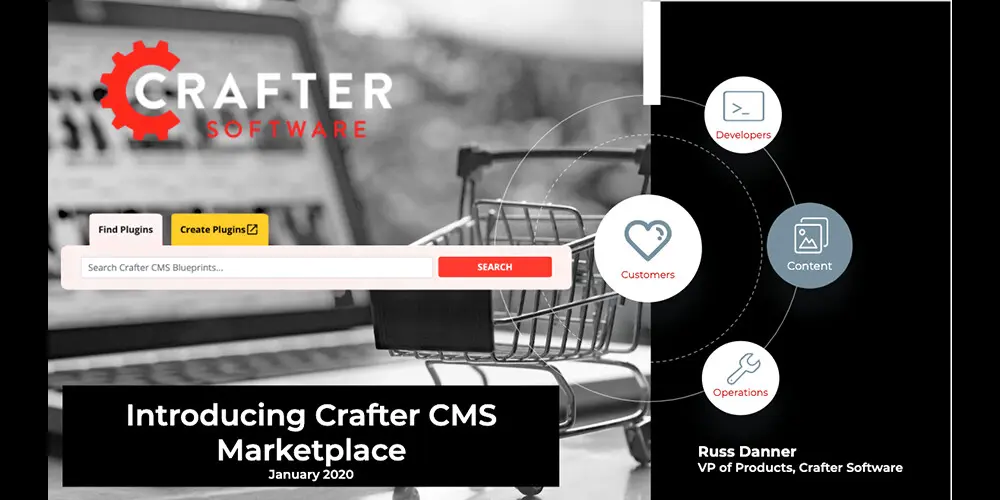JAMstack: The Ultimate Guide for Developers, Marketers, and Executives

Amanda Jones

JAMstack, which stands for JavaScript, APIs and Markup is a modern web development architecture used to build lightning-fast, static websites. Across the digital landscape of a typical mid- to large-size enterprise you will find the need for both dynamic and static sites. JAMstack is most certainly a viable option for those static sites within your digital portfolio.
JAMstack isn’t new, but it has been a go-to within the developer community since its inception. But what about marketers and executives? What do they need to know about JAMstack, and what role does it play in your content management system?
We’ve put together this guide to answer all of your questions about JAMstack. We’ll explain what it is, why you need it and the benefits it can yield for your brand or your clients.
What is JAMstack
JAMstack is the creation of Netlify co-founder, Mathias Biilmann and is a “modern web development architecture based on client-side JavaScript, reusable APIs, and prebuilt Markup.” It’s a way of building websites and web applications, and many of the current web applications today are built using this architecture. Let’s look at the three elements of the JAMstack.
JavaScript handles all of the dynamic functionalities for building web applications. There are also no restrictions on the particular framework or library that needs to be used when building a JAMStack site. All server-side functions are abstracted into reusable APIs. These APIs can then be accessed over HTTPS with JavaScript, allowing for the use of third party applications or custom functions. Markup gets pre-rendered before deployment, using source files or with a Static Site Generator.
The popularity of JAMstack didn’t happen by accident either. There are several benefits of this architecture, including faster performance, increased security, lower costs, improved scalability and overall better developer experience. Each can provide great reasoning behind JAMstack’s growth. However, one of the most significant reasons for the rise of JAMstack is the growing popularity of headless CMS platforms.
What Developers Need to Know About JAMstack
JAMstack’s growth in the developer community comes down to a few key concepts.
Developer freedom: JAMstack doesn’t rely on any proprietary tools or frameworks, so developers are free to choose the APIs, tools, and hosting services that work best for them.
Increased performance speed: JAMstack relies on static sites to deliver pre-rendered files and serve them directly from a CDN, removing the need to manage or run web servers.
Reduced complexity: Since static sites can be set up and deployed in a few minutes, making them easier to ship to production faster. It also means that with the decoupled frontend there are fewer restrictions on how content needs to be structured.
What Marketers Need to Know About JAMstack
With the vast amount of content available to consumers today, marketers need to be able to grab a viewer’s attention quicker than they ever have before. This means that websites need to be fast and a JAMstack site helps make that a possibility. However, there are some other marketer specific benefits when it comes to using JAMstack.
SEO Boost: Speed and security are two of the technical factors that play a role in how well a website ranks in a search engine. Visitors expect that a site will load fast when they visit it. If it doesn’t, then they will likely leave and move onto a competitor. A website that loads within 1-3 seconds has a very low bounce rate probability of only 32%.
Site Reliability: As a marketer, one of the things you may be concerned about is site downtime. Whether it’s down to too many plugins and other features or a server overload, website downtime can be costly for user engagement and conversion. With JAMstack, these issues are almost non-existent.
More Content Channels: JAMstack sites are built to work hand in hand with a headless CMS, giving marketers access to more content channels and more potential touchpoints to interact with a customer.
What Business Execs Need to Know About JAMstack
Business executives are primarily concerned with one thing when it comes to adopting a new piece of technology for an organization, that is the impact on the bottom line. JAMstack has a positive impact there, as well.
Performance & Scalability: With increased performance speeds, your website is likely to bring in more traffic which can lead to higher conversions and more sales.
Lower Costs: JAMstack websites don’t rely on as many servers and databases as other websites. This means that hosting costs are practically zero, which has a considerable impact on the bottom line.
Getting Started with JAMstack: Essential Resources for Devs
Getting started with JAMstack requires that your team, especially developers, have a few things in place.
JavaScript: JAMstack relies on JavaScript, one of the more popular programming languages today when it comes to web development. As long as your development team knows how to use JavaScript, then they can get to speed with JAMstack quickly. JAMstack doesn’t place any limitations on frameworks or libraries either so React.js, Next.js, Vue.js or any JS framework are perfect.
Static Site Generators: By using a Static Site Generator, developers don’t need to create static HTML pages manually. There are many great ones for getting started with JAMstack including Jekyll, Hugo and Gatsby.
Headless CMS: Understanding how to integrate a headless CMS platform to manage your content is one more vital factor for using JAMstack. Headless CMS platforms make it easy for developers to focus on other tasks because it’s easy to connect to any frontend by utilizing an API.
CrafterCMS and JAMstack
JAMstack’s growth comes as the result of new trends in web development, and it can lead to more benefits for organizations in 2021 and beyond. However, to get the best out of JAMstack, you need a reliable CMS that is JAMstack ready.
When using JAMstack, you get all of the deployment benefits. However, with some CMS platforms, you are limited in your ability to scale by the CMS vendor. CrafterCMS already has the architecture necessary to scale. As websites get bigger, static site generators like Gatsby are no longer as capable. You will need additional support from APIs that can scale and a CMS that can scale with you. Crafter’s support of GraphQL for fetching APIs, and powerful backend providing native support for JavaScript frameworks, make it a perfect choice for implementing JAMstack.
Moreover, static websites are perfectly suitable for certain use cases within the enterprise. However, most enterprises have a mix of static and dynamic sites and apps that drives the full range of their digital experiences. Dynamic sites benefit from a serverless and stateless CMS like Crafter. And enterprises leveraging JAMstack will benefit from a headless CMS that supports both static and dynamic use cases.
Related Posts

No-Code Experience Building for Marketers & Designers

Amanda Lee

Is Your CMS MACH-Ready? A Practical Guide for Enterprise Architects

Sara Williams

Composable DXP vs Traditional DXP: Why Enterprises Choose CrafterCMS

Amanda Jones

Connecting Content and Campaigns: Integrating CrafterCMS with Salesforce Marketing Cloud

Sara Williams








